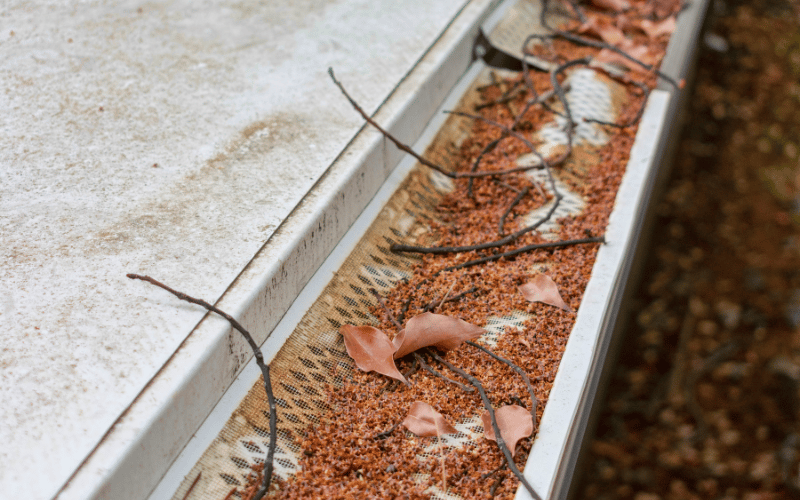- The Proactive Home
- Posts
- Gutters: Friend or Flooder?
Gutters: Friend or Flooder?
Protect your foundation before the next Lowcountry storm hits.
Welcome to Issue #2 of The Proactive Home
This newsletter is for homeowners who would rather prevent a mess than clean one up. Each week, you will get one fix, one five-minute task, one tool, and one local alert to stay ahead of the game. No fluff. No filler. Just what matters.
Let’s get to it.
Main Fix: Clear Those Gutters Before They Wreck Your Foundation

This gutter screen with with pollen, twigs, and debris. In the Lowcountry, that kind of buildup turns “protected” gutters into a slow-moving flood risk. U
Most folks do not think about gutters until water is pouring over the edge like Niagara Falls. By then, the damage has already started. Around here, clogged gutters are one of the top reasons water makes its way inside, and we have seen it happen too many times.
Poorly maintained gutters can:
• Dump water right against your foundation
• Rot out your fascia boards and roof edges
• Invite mold into your attic or walls
• Turn into mosquito breeding grounds
• Erode the soil that is supposed to protect your house
We have walked properties where the gutters were so clogged, water overflowed into the eaves, soaked the walls, and ran straight into the crawlspace. One house had plants growing out of the downspout. Another had a full bird’s nest blocking the corner. If you do not clear it, nature will move in.
And even when your gutters are clean, you are not in the clear. During one of the recent downpours, we saw water shooting out of a downspout and pooling right at the base of the home. The splash zone turned into a pond, and within minutes, water was creeping up the foundation. I was soon standing in five inches of water, clearing a path through the mulch to give the water a place to go. The smell of those socks when I got home still haunts me.
Screens are no silver bullet, either. In the Lowcountry, the pollen can get so thick it feels like a second season. Once it gets wet, it turns to a sticky paste that clogs up gutter screens like chewing gum in a coffee filter. We have seen entire gutters overflow not from leaves, but from that yellow sludge packed tight over the mesh.
So do not just clear your gutters. Make sure they drain away from the house, and if you have screens, take a close look at what is sitting on top of them.
Here is how to fix it:
Use a sturdy ladder and check the corners first
Scoop out leaves, pine straw, shingle grit, nests, and whatever else is in there. Wear gloves (gutter edges, flashing, etc. can be very sharp)
If you have screens, lift them or rinse them off. Especially during pollen season
Run a hose from the top to make sure water flows through the downspouts
Check that downspouts extend well away from your foundation
Watch for water spilling behind the gutters. That usually means they are pulling loose
If you are near trees, check every month during leaf season
Gutters are boring when they work. They are a disaster when they do not.
5-Minute Task
After the next big rain (of which we’ve had a lot lately), walk the perimeter. Look for overflow, pooling, or signs of erosion. Take a picture of any problem areas so you can track changes over time.
Tool Spotlight
Adjustable Gutter Cleaning Tool with Extension Pole
Skip the ladder. This tool lets you scoop from the ground. It is faster, safer, and just easier.
Lowcountry Watchlist
Storm season is here. Pop-up thunderstorms and heavy afternoon rain are back on the calendar. Even one quick downpour can cause major damage if your gutters are clogged. Get them clear before the skies open up.
Thanks for reading.
Smart move checking your gutters before the rain hits. If you have a tricky corner that always overflows or a setup you are not sure about, reply to this email. I read every message and I am happy to help.
If this helped, forward it to a neighbor or anyone who might be one storm away from a flooded crawlspace. Every problem we prevent is one less mess to clean up.
— Mike
Reply